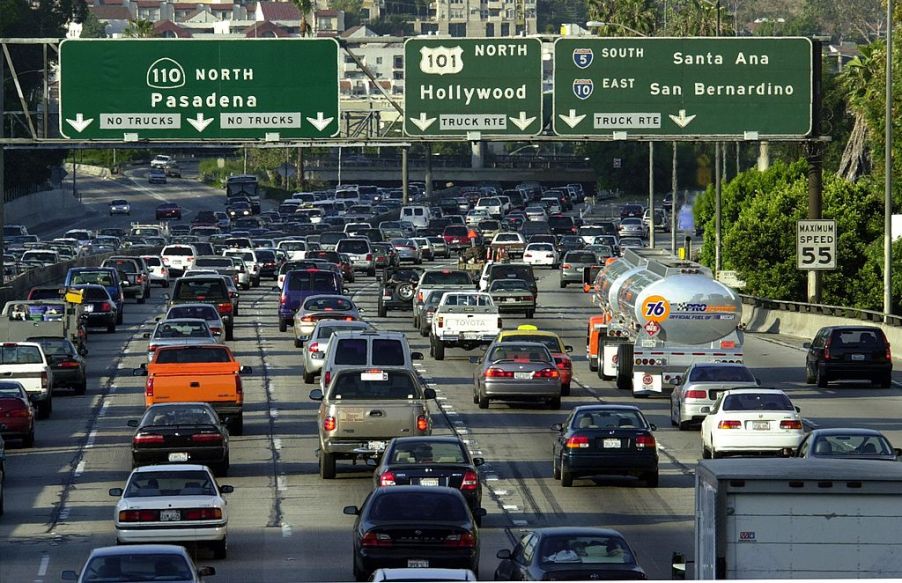
The 10 Worst Cities for Driving in the U.S.
A recent Chicago Tribune article reports that cost of ownership is turning Americans away from their fascination with cars. But many still view driving as a necessary evil. And in certain cities, the driving is about as evil as it can get in these United States.
And even if public transportation is cheap and readily available in their city, drivers still like the comfort and convenience of their own cars. The price of enjoying your own private transport space and being able to leave when you want can be high. And snarled traffic and decaying infrastructure make driving more challenging in many places.
With these obstacles to driver happiness in mind, WalletHub looked at 100 major U.S. cities to find out which are the worst (and best) for driving. Four key dimensions were considered: cost of ownership and maintenance, traffic and infrastructure, safety and access to vehicles and maintenance. A total of 30 factors were measured within these dimensions, including annual hours spent in congestion per auto commuter, accident likelihood in city versus national average, rate of car thefts, auto maintenance costs, and auto repair shops per capita.
With the exception of Boston, several of the worst cities for driving that were on last year’s list are here for 2019. Here they are from the least bad to the very worst.
10. Honolulu, Hawaii
Owning and keeping a car in Paradise probably doesn’t help Honolulu drivers stay in the spirit of aloha. The city ranks the highest of auto maintenance costs among the 100 cities studied. It also shares many of the same problems of traffic and infrastructure with many cities on the mainland since it ranks in the bottom 20 for this category.
9. New York City, New York
That the Big Apple ranks in the bottom five of the highest number of hours spent in traffic congestion per driver should surprise no one, especially its drivers. They also pay the highest parking rates among all the cities. But if NYC drivers need their cars fixed, they’re in luck: their city ranks third for the most auto repair shops per capita.
8. Los Angeles, California
Car-crazy L.A. isn’t the worst in any single major category, but it does score poorly both in cost of ownership and maintenance and in traffic and infrastructure. The City of Angels ranks in the bottom five of the highest accident likelihood versus the national average. Much of Los Angeles’ problems in these categories probably can be attributed to its crowded freeways.
7. Seattle, Washington
Seattle, like Los Angeles, has bad rankings in cost of ownership and maintenance and in traffic and infrastructure. Its scoring in the other two categories isn’t too impressive, either. The Emerald City’s bottom five rankings include highest auto maintenance costs, most days with precipitation, and highest number of hours spent in congestion per auto commuter. With these numbers, the city’s public transportation network might become more appealing to its residents.
6. Washington, D.C.
The District makes a poor-to-mediocre showing across all categories, with the traffic and infrastructure category being its weakest. It ranks second from the bottom for annual hours spent in congestion per commuter. D.C. was in the bottom five for highest accident likelihood versus national average, fewest auto repair shops per capita, highest parking rates and rate of car thefts.
5. Newark, New Jersey
Newark has unsatisfactory rankings except in the access to vehicles and maintenance category where it sits solidly in the top 30. Like New York, the next nearest big city, it has a low ranking in traffic and infrastructure due to high traffic volume. Maybe this is why Newark is known for its international airport and not for its streets and byways?
4. San Francisco, California
No doubt that the City by the Bay is beautiful for touring—on foot or by trolley—but not by car. San Francisco drivers live in one of the most expensive U.S. cities to own and maintain a car. They pay the highest gas prices of all 100 cities. Traffic and infrastructure aren’t the city’s strong points, either, since it ranks in the bottom 15.
3. Philadelphia, Pennsylvania
Philly may be the City of Brotherly Love, but it’s hard to find it some ranking love on the WalletHub list. It scores in the bottom five for highest accident likelihood versus national average and highest parking rates. The city’s jammed Interstate 95 corridor and antiquated Schuylkill Expressway help to put it in the bottom five of the traffic and infrastructure category.
2. Oakland, California
Oakland may be an affordable option over San Francisco for people who want to live in the Bay Area, especially if they use public transportation. For its drivers, though, there may not be too many advantages. Oakland ranks in the bottom five for gas prices and car theft. Traffic and road infrastructure, like many of the California cities in the WalletHub list, are also low points for this city.
1. Detroit, Michigan
As the birthplace of the American auto industry, the Motor City shouldn’t, by any reckoning, rank last on the list. But Detroit ranks at the very bottom for the safety category and is in the bottom five for car theft. Its best rating is access to vehicles and maintenance makes sense in a city so well known for producing the Big Three, but it still falls in the middle of the ranking compared to other cities. If any city deserves a turnaround for driver-friendliness, it’s this one.


